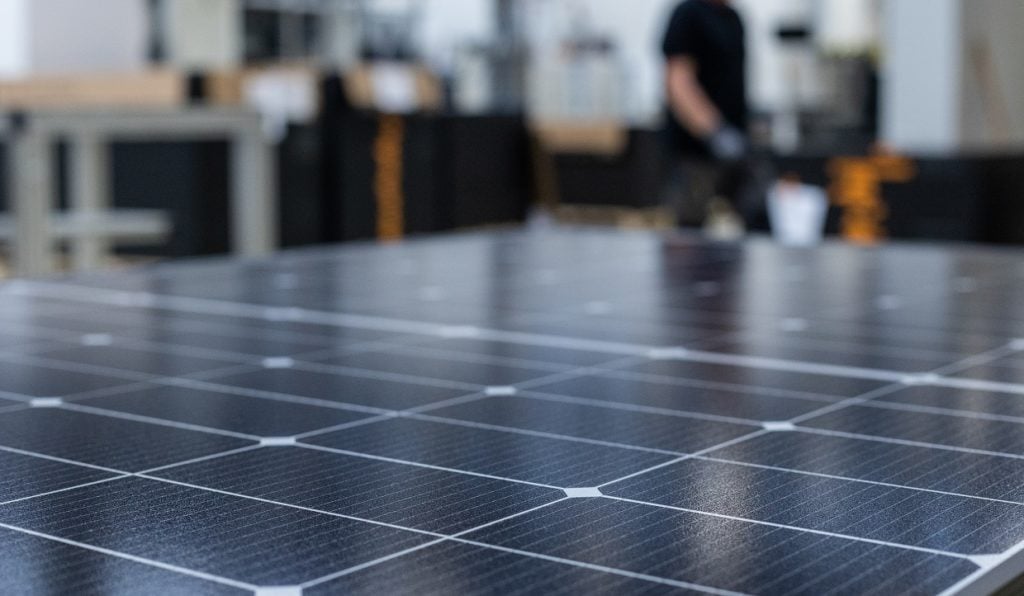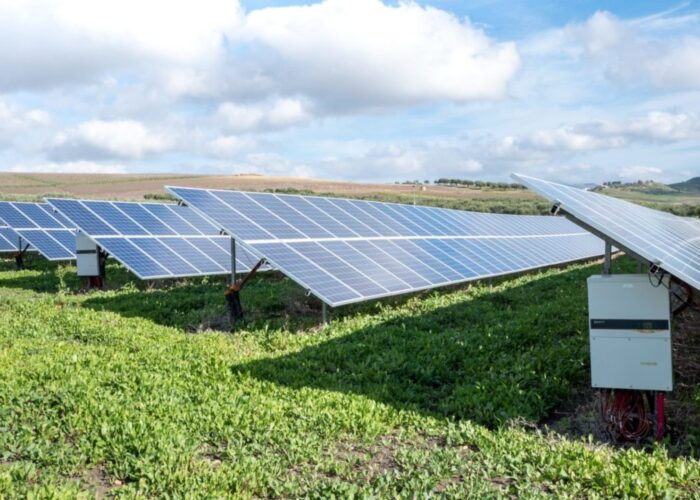
Global carbon reduction goals are highly dependent on dramatically and rapidly scaling up solar deployment; the International Energy Agency (IEA) estimates we will need to triple global photovoltaic (PV) deployment by 2030.
In the US, where projections for energy demand driven by clean tech manufacturing, data centres and the electrification of buildings and transportation are rising rapidly, the North American Electric Reliability Corporation projects that over half of the US could be at risk of insufficient power-generating capacity by 2030. These trends mean we need to manufacture a lot more solar products across the supply chain to meet global demand.
Unlock unlimited access for 12 whole months of distinctive global analysis
Photovoltaics International is now included.
- Regular insight and analysis of the industry’s biggest developments
- In-depth interviews with the industry’s leading figures
- Unlimited digital access to the PV Tech Power journal catalogue
- Unlimited digital access to the Photovoltaics International journal catalogue
- Access to more than 1,000 technical papers
- Discounts on Solar Media’s portfolio of events, in-person and virtual
As trade laws and concern around the concentration of solar manufacturing in China increase, can the solar supply chain support global demand?
Overcapacity in China
Solar manufacturing is currently concentrated in China and that concentration leaves the industry exposed to global disruptions in the supply of PV modules, whether from trade actions or the logistics challenges associated with COVID-19. With the Chinese grid still heavily reliant on coal-fired power generation, solar manufacturing in China is also a significant contributor to global greenhouse gas emissions. Further, over-investment in solar manufacturing in China has led to significant excess production capacity across the solar supply chain. This is resulting in suppression of prices across the solar industry as too much supply chases too little demand.
With manufacturers sitting on excess inventories, even as new manufacturing capacity comes online, we are seeing ruthless price competition as parties try to clear inventories. Notably, selling prices are below manufacturing costs not just in the US and the EU but in China itself. Despite the Chinese government’s efforts to absorb excess inventory through rapid expansions in PV deployment within China, prices remain low.
There are growing concerns about module quality as manufacturers struggle to reduce production costs. These concerns were recently highlighted by the Chairman of LONGI calling for the Chinese government to take action to stabilise prices and address quality concerns in the Chinese industry, shortly before reports of 30% staff reductions. With profitability sliding as overcapacity grows, Chinese manufacturers and analysts anticipate significant turmoil in the Chinese PV industry in 2024.
These dynamics are rippling out to the EU and US markets. PV inventories in the EU recently reached roughly two years of demand, and as companies seek to reduce inventories, EU module prices have tumbled to well below the cost of production. EU solar manufacturers are shuttering operations in response. We are also seeing significant inventories building up in the US, with price declines pressuring both existing and planned US PV manufacturing across the supply chain, slowing the recent robust growth in solar manufacturing in the US.
While expansions elsewhere in the world are being announced, such as Imperial Star Solar’s 4GW wafer announcement in Laos and United Solar Holding’s announcement of a 30GW polysilicon production facility in Oman, the impact of current pricing on those projects remains unclear. PV manufacturing in India is expanding, but not at the rates envisioned under the Production Linked Incentives scheme, as low module selling prices burden Indian manufacturers as well.
Taken together, these trends suggest that without change, we will continue to see an unhealthy level of concentration in the solar supply chain and potentially significant supply disruptions from policy actions.
Pushback in the West
As US and EU geopolitical and competition tensions with China rise – particularly in clean energy sectors like solar – trade and political interventions are rising along with them.
It appears likely that the current exemptions for bifacial modules under the US Section 201 tariffs will be rescinded, and US anti-dumping tariffs on some solar products from Southeast Asia will resume shortly, including for products in US inventories. The US is also signalling expanded implementation of the Uyghur Forced Labor Prevention Act (UFLPA). US Customs and Border Protection is scrutinising growing Chinese polysilicon exports to SE Asia, as much of the manufacturing capacity there is focused on the US market, and the presence of Chinese-sourced polysilicon raises UFLPA concerns.
In the EU, restrictions on the import of products made with forced labour are slated to come into effect in the coming years, though the impact of these restrictions will be felt too slowly to have any effect on the current market turmoil. There are also increasing calls for action against the perceived dumping of Chinese PV products into Europe.
Is decarbonisation in jeopardy?
In sum, the solar market faces a volatile combination of circumstances: continued growth in carbon-intensive Chinese solar manufacturing; likely consolidation in the Chinese industry with its corresponding upward pricing pressure; and increasing policy action targeting business practices in parts of the Chinese PV manufacturing sector. Collectively these factors portend an unsettled environment for PV buyers.
These factors bring into question the reliability of the current supply chain in providing global markets with the volume of solar modules that will be required to meet global decarbonisation goals. The current “sugar high” of exceptionally low module prices could well lead to a hangover of price volatility and supply challenges.
This suggests that we need to continue and expand efforts to diversify and decarbonise the solar manufacturing sector by encouraging more manufacturing in more geographies. To accomplish this, both private sector buyers and policymakers must consider the PV market in longer, more strategic time frames. Failure to do so could jeopardise global net zero goals and undermine national electrification and carbon reduction goals.
Michael Parr is the executive director of the Ultra Low Carbon Solar Alliance, a coalition of solar manufacturing companies using market forces to decarbonise the solar supply chain.







